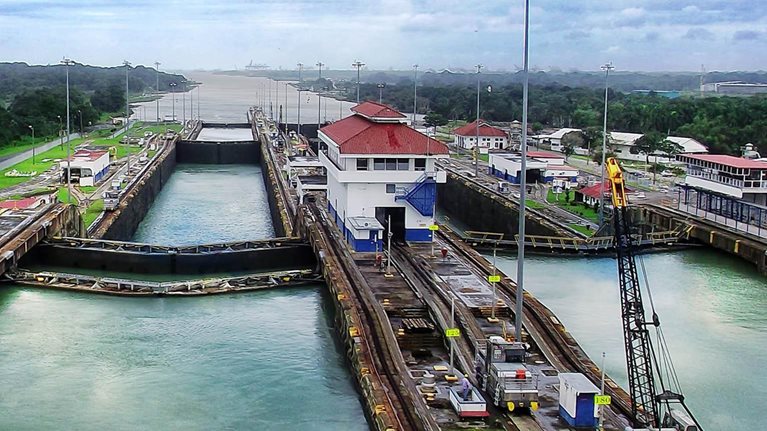Infrastructure has a problem. Even for projects that are similar and that many companies have experience building—think of roads, for example—delays and cost overruns are common. Poor planning and execution, unbalanced contract terms and conditions, inadequate controls, and lack of proper risk management are rife.
According to data from IHS Global Insight,1 construction productivity in many areas has worsened over the past decade; the IHS Herold Global Projects Database2 estimates that large infrastructure, mining, and oil and gas projects, on average, cost 80 percent more than budgeted and run 20 months late. Major events like the Olympics and World Cup have to start on time, but in recent decades, have always cost more than the original projections.3 Finally, some projects meet these goals, but don’t work as intended.
Does it have to be this way? Not necessarily. Some projects, after all, are delivered as planned, such as the Alameda Corridor freight rail program in Southern California and Singapore’s North East rail line. Based on my experience and research, here are five ways to improve the odds of success.
Manage more than just time and budget. For infrastructure projects, the emphasis is usually on completing the project on time and on budget. These matters are important, but they are not everything. A project that is completed punctually but that doesn’t work well cannot be considered a success. Think of a new airport or highway that handles less than the planned capacity because of design changes or cut-backs during construction but was completed on time and on budget. These functional elements need to be tracked just as rigorously as the traditional parameters of cost and schedule.

Voices on Infrastructure, Number 3
Apply the appropriate delivery method for each project. Particularly in the public sector, there is a tendency to opt for the same delivery method—such as design-bid-build, construction manager at risk, or design-build—for all capital projects. This is understandable. Doing the usual is safer than trying something new.
But conditions can differ. It makes much more sense to evaluate each project and then decide which method is most appropriate. This means evaluating a wide array of factors, such as permitting and regulatory status, land-site control, owner priorities, geotechnical and subsurface analysis, organizational and supply-chain capacity, degree of risk, and potential for changes. This evaluation can clarify which delivery method fits the risk profile. One North American infrastructure agency uses a “value for money” assessment when it is considering using a nonstandard delivery model. It compares total project costs for each option, thereby verifying that the chosen delivery model was best suited for that particular project. This may sound like an obvious approach; in my experience, though, few agencies do it.
Balance risks. Organizations that work with designers and contractors must accept that this is a business relationship fraught with risks—and be willing to share them. Counterintuitively, this may actually lower the risks for everyone and make the project run more smoothly.
Profit margins for infrastructure companies are typically low. Taking a hit on a single big project can jeopardize their financial well-being. Therefore, if the owner tries to shift all or most risks and liabilities over to these companies, the latter will naturally seek ways to cover or hedge them through higher bid costs, additional contingencies, costly insurance policies, or adversarial contract management. This approach may lead to disputes, delays, and failure.
During the construction of Heathrow’s Terminal 5, the parties managed risk more collaboratively. (Terminal 5 opened in March 2008 on schedule and within budget; for more, see “Remember the people: The foundation for success in 21st-century infrastructure,” in Voices on Infrastructure, Spring 2016.) The client, Heathrow Airport, held a comprehensive insurance policy to cover all risk. Instead of a traditional client-contractor relationship, Heathrow treated the different partners like team members. It invited them to work together to solve complex issues during delivery and to help Heathrow find the technical solutions that worked best for the project as a whole. This allowed all the parties to focus on finding ways to keep the project on schedule and within budget. That, in turn, helped the different companies meet their own obligations. This is similar to the successful alliance-contracting approach that has been used extensively in Australia on large projects, in which the project owner, designer, and contractor work under one contractual agreement to jointly deliver the project.
Involve operations and maintenance experts from the start. Projects that have progressed smoothly through the design and construction phases still have a chance of hitting a rough patch. This can happen when the people who will ultimately operate and maintain the asset, whether it is a rail system, port, terminal, or highway, are shut out of the decision-making process during design and construction.
Decisions affecting the total cost of ownership—including access and logistics, spare-parts management, and trade-offs of initial versus operating costs—are critical. The costs associated with operating and maintaining infrastructure assets over a 20- to 30-year span run many times higher than the costs for design and construction. Therefore, the costs must be considered in the planning and design. That requires making operations and maintenance experts part of the team from the beginning. Many oil and gas companies use this approach for big capital projects. They have found that doing so means that projects are ready to run on completion and that operations and maintenance personnel are prepared as well.

Would you like to learn more about the Global Infrastructure Initiative?
Consider the project’s legacy. As previously discussed, a successful infrastructure asset operates as intended. But particularly for public-sector projects, success should have broader benefits as well, such as skills development, job creation, strengthening the local supply chain, and expanding knowledge sharing and capability building for the client. For example, some regions lack experienced staff, so companies commit to training local workers. In London, the Crossrail project (see “Breaking the mold: How Crossrail’s Innovate 18 program works”) established the Tunneling and Underground Construction Academy (TUCA) in 2011. TUCA has trained more than 10,000 people in the skills and safety methods required to work in the tunnel network.
The Alameda Corridor freight rail program in Southern California and the Tren Urbano rail project in Puerto Rico provided job and skills training to local people and emphasized working with small and local businesses. Providing such benefits help people, the community, and local businesses. This is much easier to accomplish when it is made a priority from the beginning.
In 2013, McKinsey calculated that the world would need to spend $57 trillion on infrastructure by 2030 just to keep up with economic growth. While countries are not investing at that rate, there is massive infrastructure investment on the way. Learning from the experience of successful projects—and unsuccessful ones, too—can help to improve outcomes, and improve both the infrastructure industry and the communities it serves.


